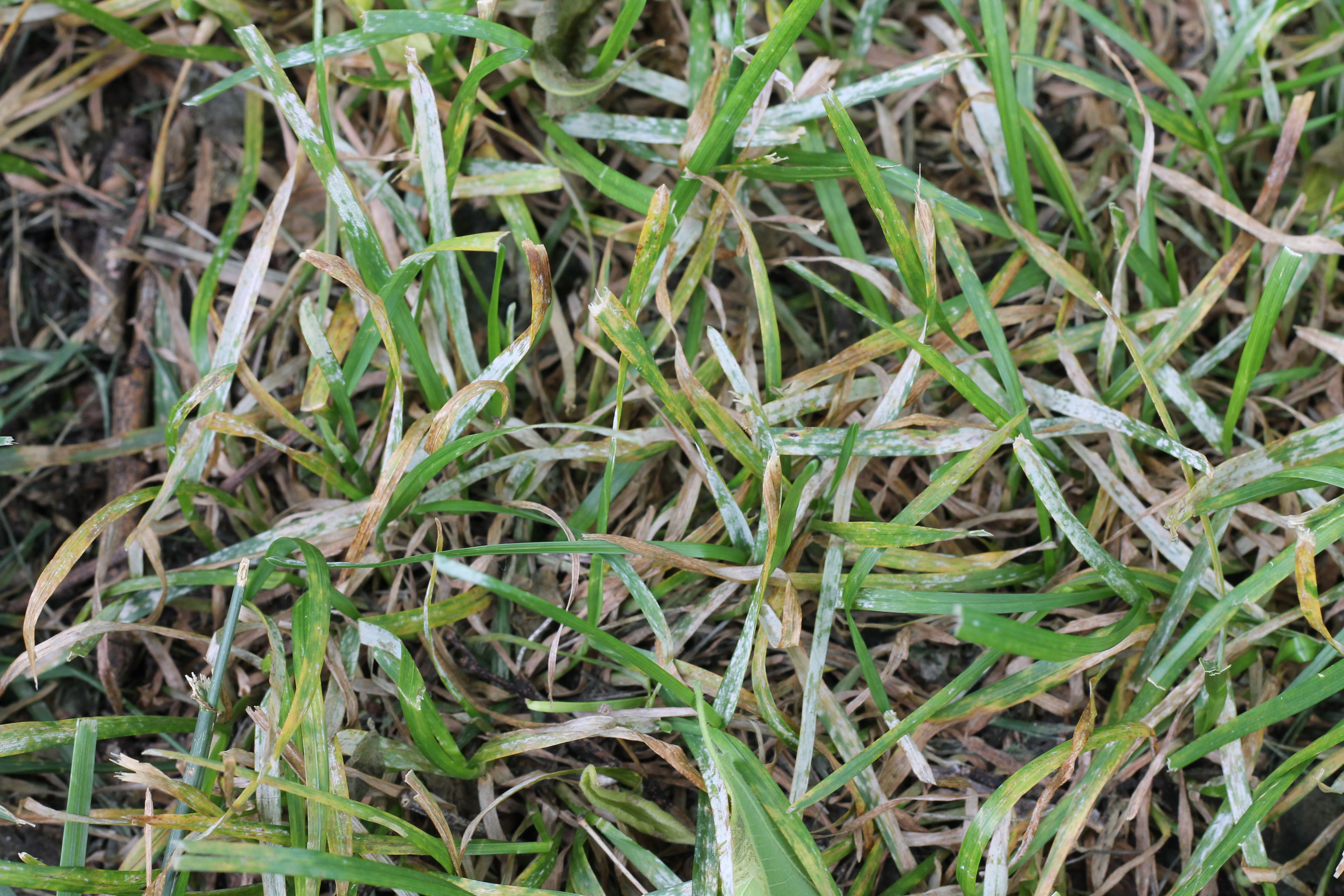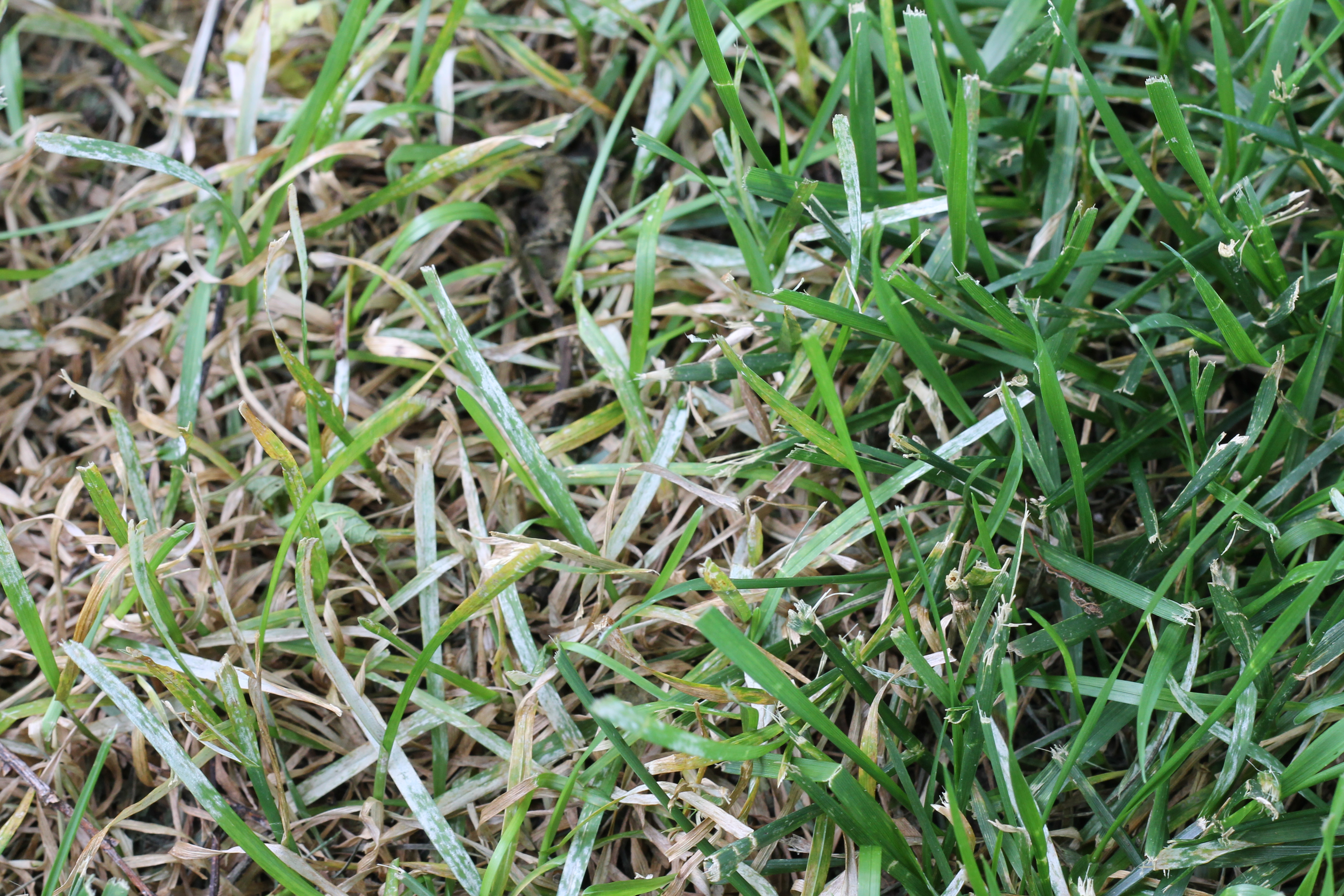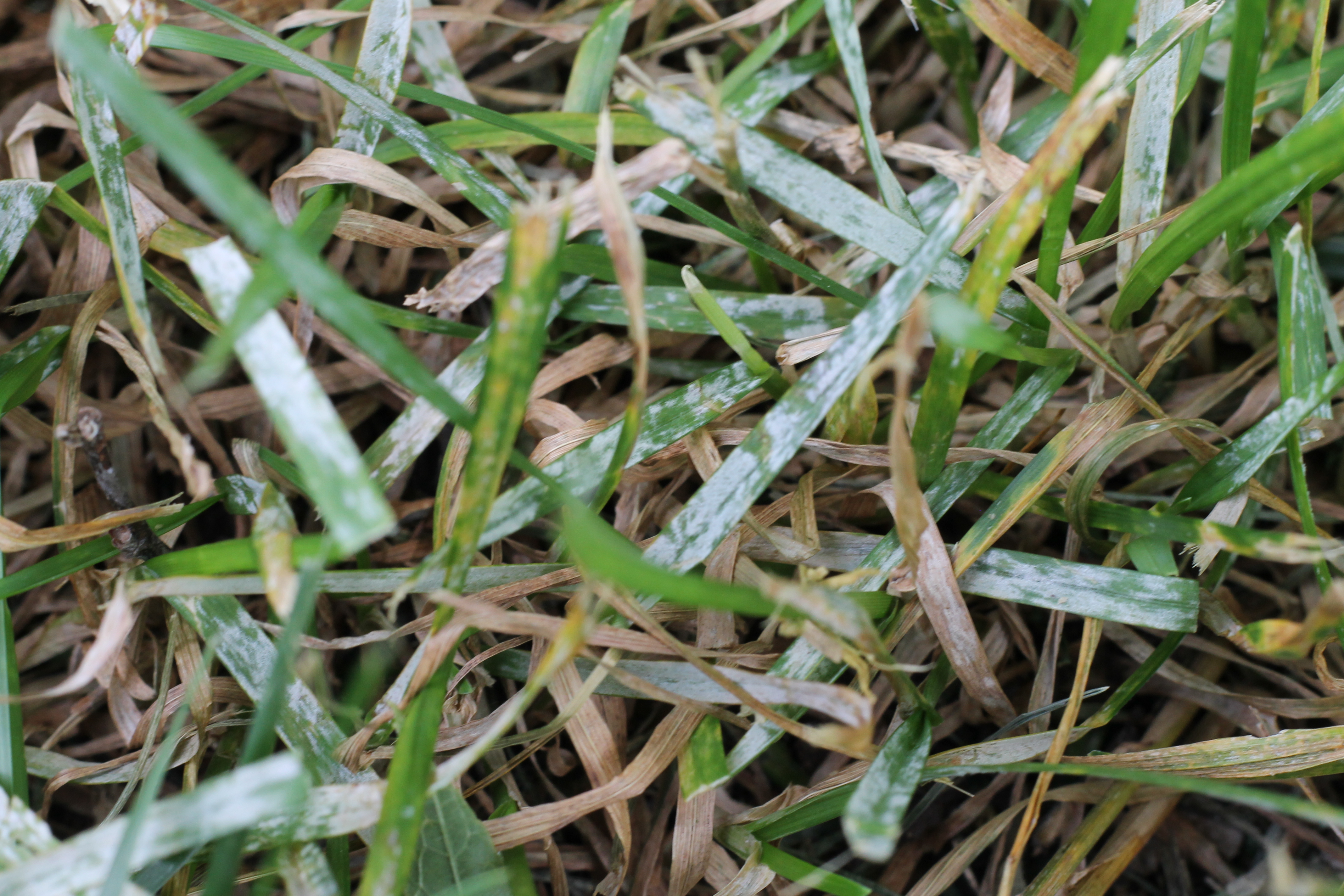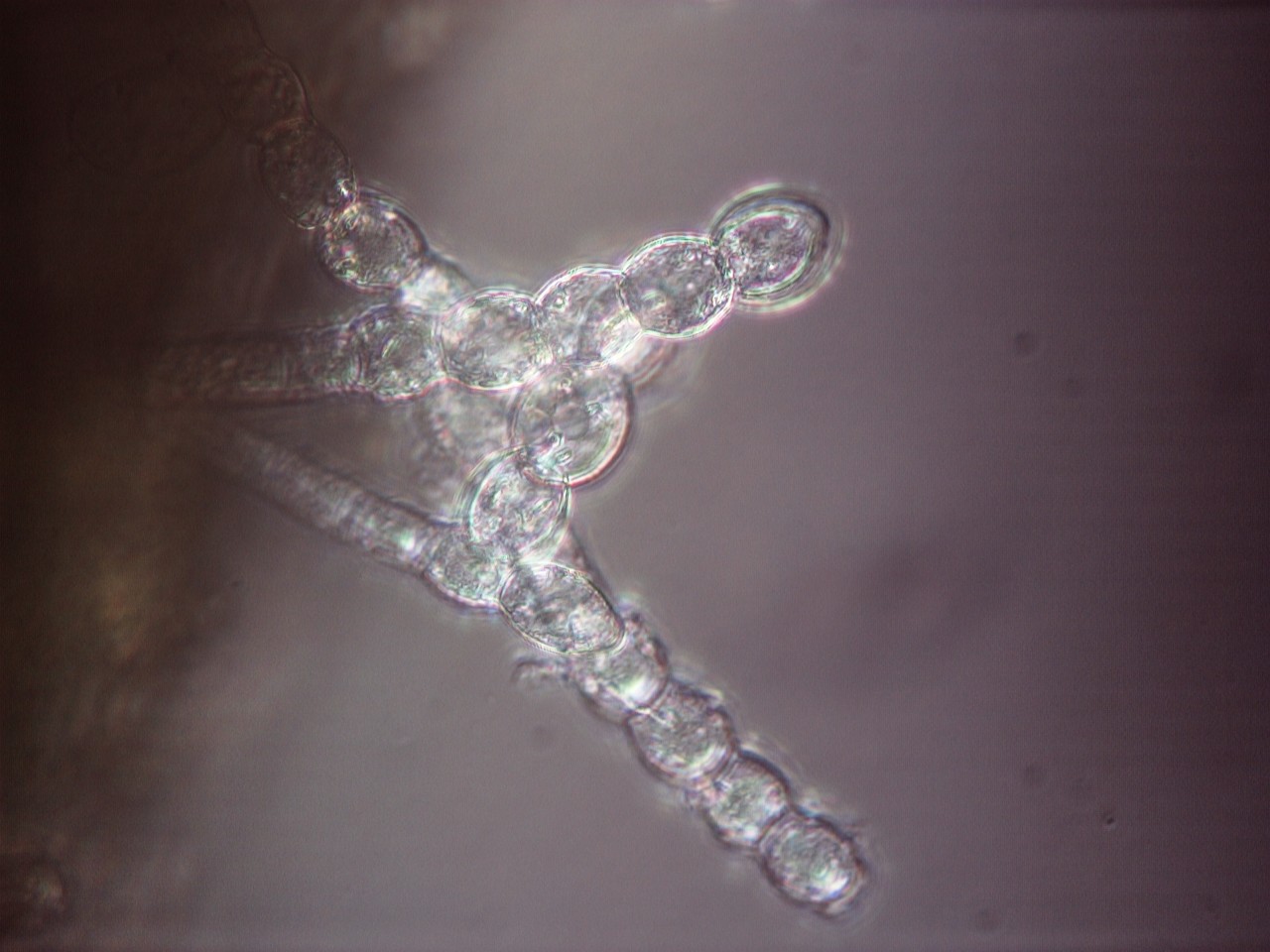Turf powdery mildew thrives in shady sites during cool, humid weather. We have had a lot of cool, moist days with temps in the 50s and 60s which is perfect for powdery mildew. The disease is often temporary, disappearing when hotter, drier weather kicks in.
The following photos are courtesy of my excellent colleague Chuck Otte, County Extension Agent, Ag & Natural Resources, Geary County. He confirmed that the site is shady.
It’s a fescue/bluegrass blend. To my eye, it looks like the Kentucky bluegrass is affected more than the fescue.
This next photo is a super-zoom of powdery mildew through the microscope. The photo is from squash powdery mildew, not turf powdery mildew, but turf powdery produces similar structures – long chains of spores. The spores are blown by wind. When they land on a new, susceptible plant and IF conditions are right, they germinate and infect.
We see turf powdery mildew in spring and fall. A change to less humid, hotter weather will slow the disease.
Turf powdery mildew is one of the many diseases covered in the 2017 Turfgrass Fungicide Guide.
There are fungicides labeled, but for most of them little is known about the efficacy. The DMI fungicides have efficacy, but it can be hard to reduce disease once it is underway. Also, as I just mentioned, a shift in the weather will slow the disease. If a site has a chronic, ongoing powdery mildew options include improving airflow and sun exposure or renovating to a less susceptible type of turf or groundcover. Those cultural practices and site management tweaks are your best bet.





